Dive into the abyss of the ocean, and you’ll find a world so alien, it might as well be another planet. Down here, the darkness is king, and the creatures that call it home? They’re the royal court of weird. But what are the weirdest underwater animals?
If you’re an urban millennial with a taste for the unusual and the spectacular, prepare for a journey into the deep blue’s most bizarre nooks and crannies.
This isn’t your standard aquarium tour; it’s a VIP pass to the ultimate show of nature’s oddities. So, get your snorkel, and let’s explore the weirdest underwater animals that make the ocean’s murky depths a whole lot more colorful.
The 12 Weirdest Underwater Animals
1. Blobfish
First up on our tour of the ocean’s oddball brigade is the blobfish, a creature that looks like it’s perpetually on the verge of asking you why you woke it up.
Native to the deep waters off the coasts of Australia and Tasmania, the blobfish has been crowned the “world’s ugliest animal,” but hey, beauty is in the eye of the beholder, right?
This gelatinous blob floats around the deep sea, its body density just a tad less than water, making it a master of the effortless drift. It’s a face only a mother could love, sure, but in the high-pressure world of the deep sea, the blobfish’s gooey physique is the perfect adaptation.
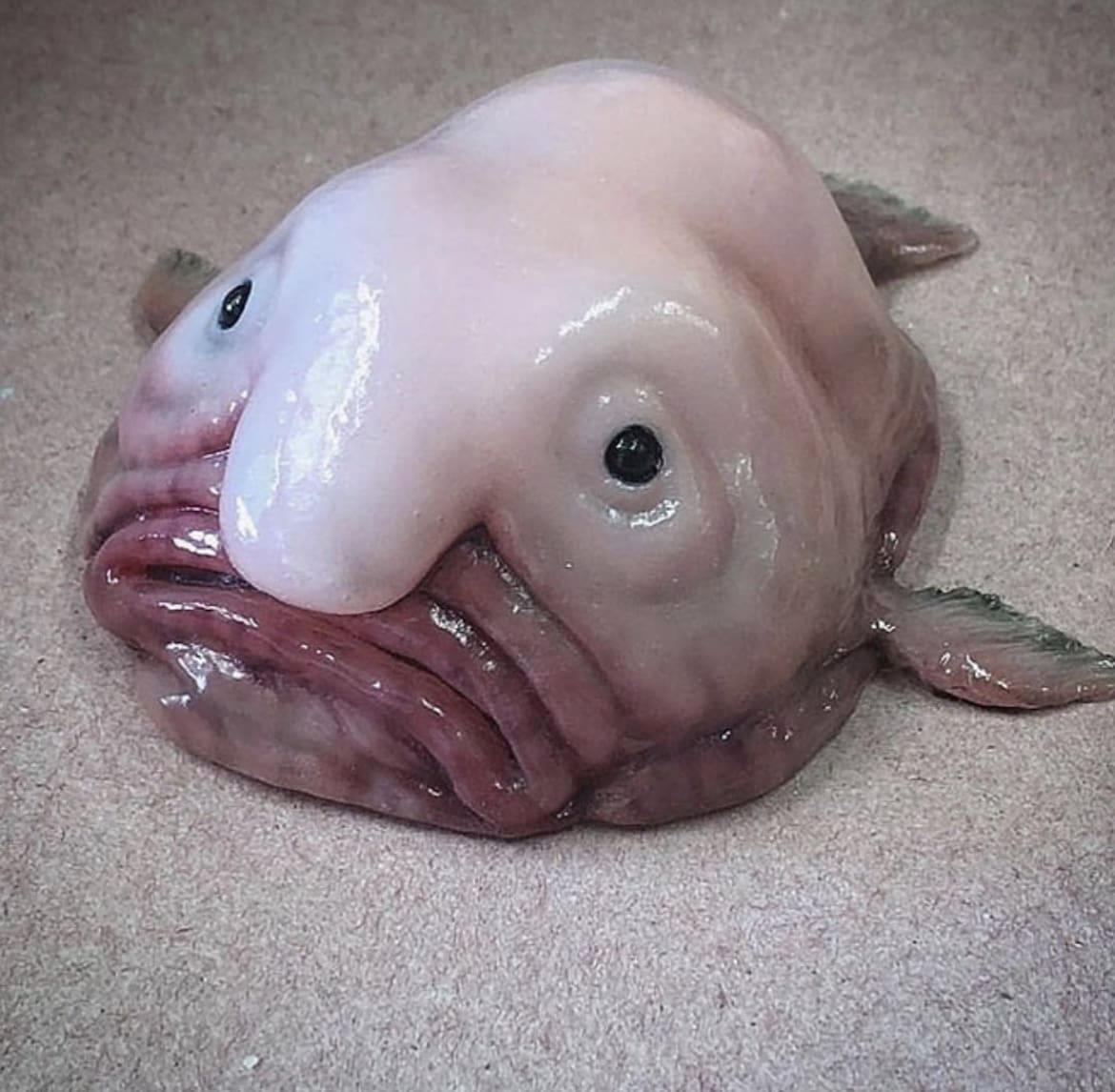
2. Goblin Shark
Next up, the goblin shark, a creature that takes the “living fossil” title a little too seriously.
Imagine a shark designed by a committee that couldn’t agree on anything. The result? A pink, elongated body topped with a snout that looks like it was borrowed from a swordfish and teeth that could’ve been plucked from your nightmares.
The goblin shark’s jaw is a marvel of evolutionary engineering, capable of launching forward to snag its prey in a move that’s as horrifying as it is fascinating. It’s the stuff of deep-sea legend, lurking in waters so deep that sunlight is just a rumor.
With a lineage dating back some 125 million years, this shark is a reminder of the ocean’s mysterious past and our fleeting presence in its narrative.
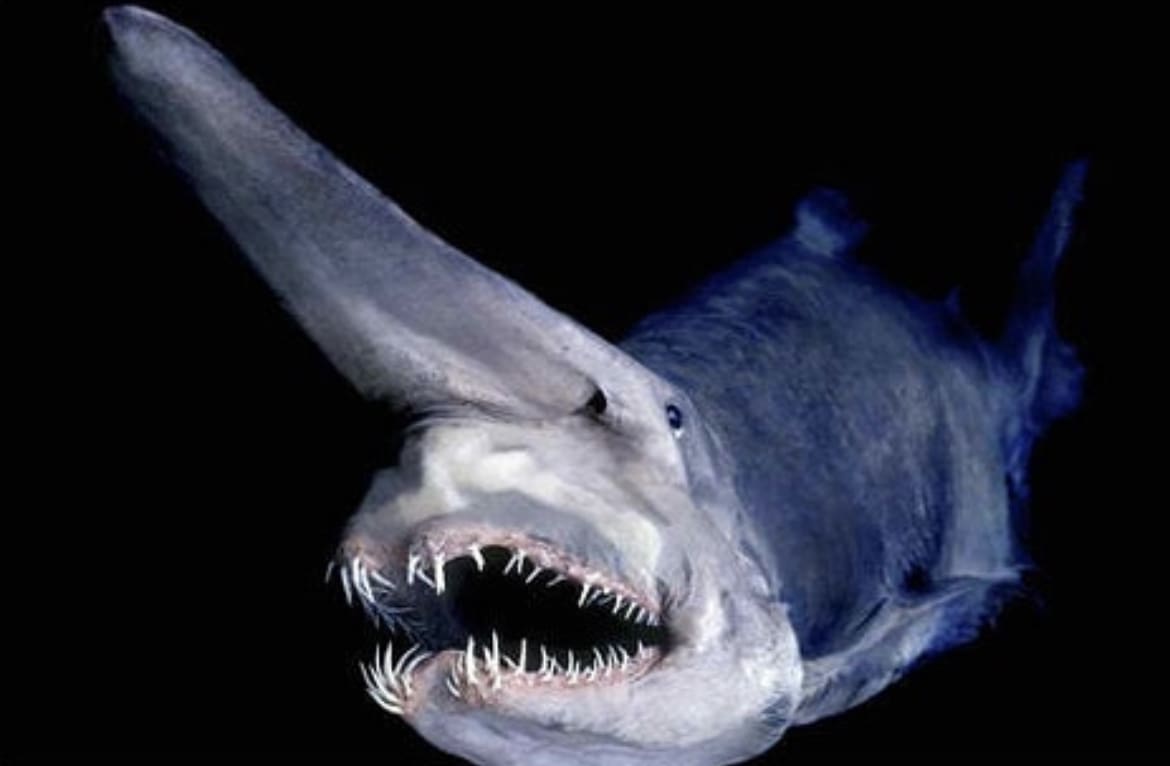
3. Vampire Squid
The vampire squid is a creature that sounds like it was named by a marine biologist going through a goth phase.
With its dark, webbed cloak and red eyes, the vampire squid looks ready to headline an underwater emo concert. But don’t let its macabre moniker fool you; this deep-sea dweller is more misunderstood softie than bloodthirsty predator. The vampire squid resides in the oxygen-minimal layers of the ocean, a zone known as the “midnight zone,” where it feeds on detritus—essentially, the ocean’s leftovers.
It’s a peaceful creature, flitting through the dark waters with an elegance that belies its eerie appearance. Despite its name suggesting a penchant for the dramatic, the vampire squid is a testament to the ocean’s ability to surprise and enchant, even in the deepest, darkest corners.
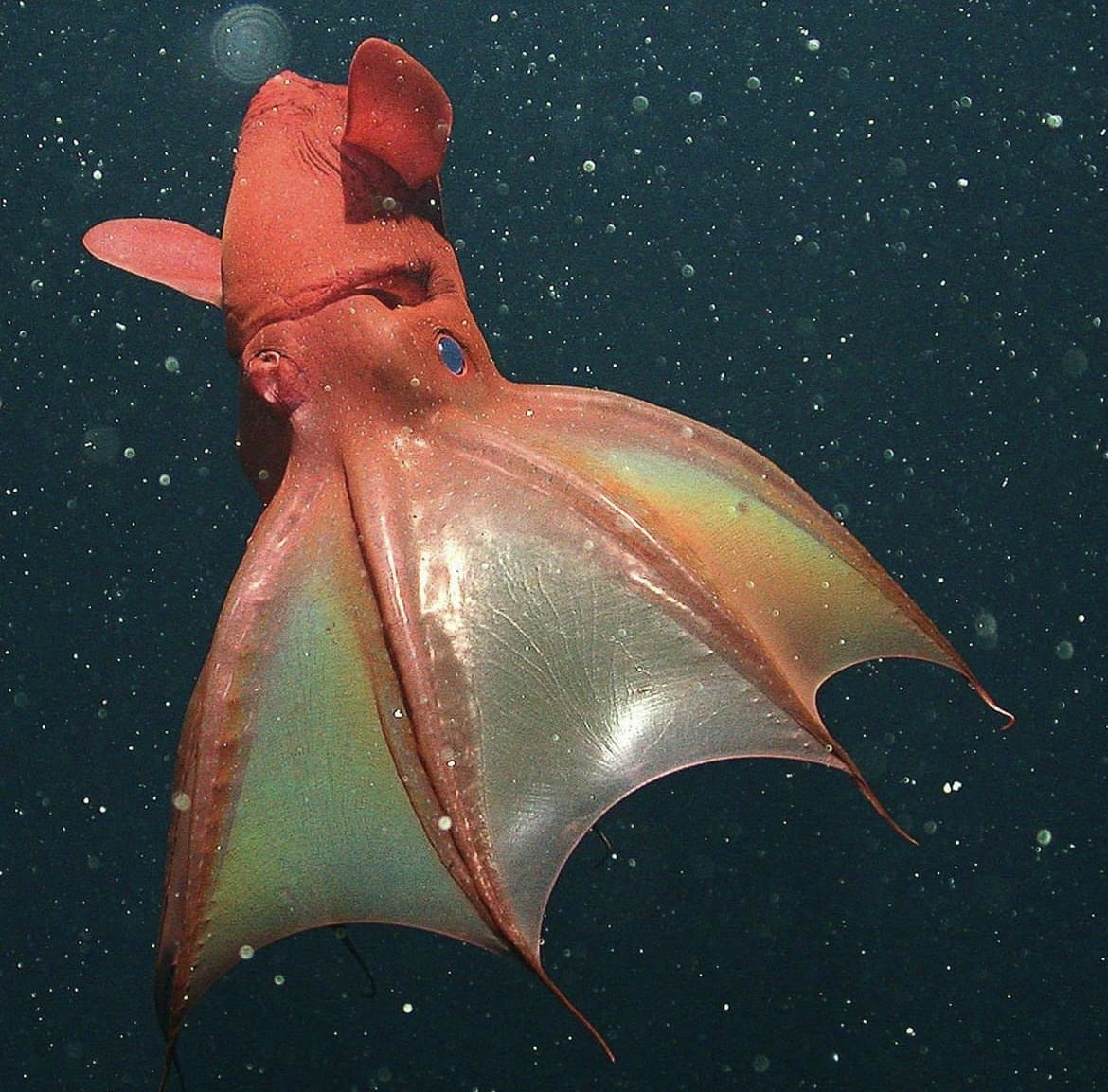
4. Leafy Seadragon
Amidst the weirdest underwater animals, the leafy seadragon holds its own with a grace that rivals the finest ballet dancers.
Drifting through the waters off the southern coast of Australia is the leafy seadragon, a master of disguise in the undersea realm. This enchanting creature, with appendages resembling seaweed, blends seamlessly into its kelp-filled habitat, eluding predators with unparalleled grace.
But don’t let its delicate appearance fool you; this seadragon is as hardy as they come, thriving in the cool, rough waters of the Australian coast. Its unique form and flowing movements make it one of the ocean’s most unusual aquatic animals, a true natural marvel that captivates divers and marine biologists alike.
Watching a leafy seadragon dance with the currents, you’re reminded of the sheer creativity of evolution, painting life with a palette of endless imagination.
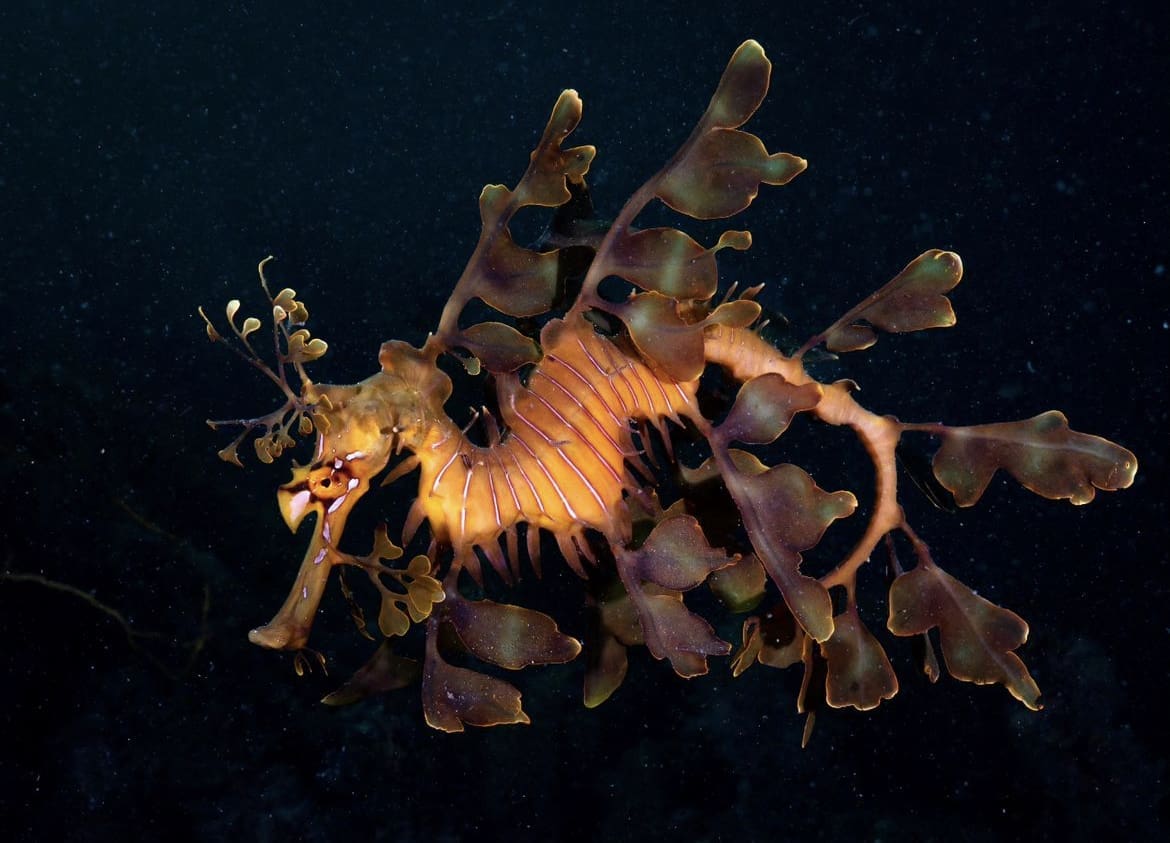
5. Mantis Shrimp
Enter the world of the mantis shrimp, an underwater heavyweight that packs a punch as colorful as its vibrant exterior.
This small but mighty crustacean is equipped with one of the most sophisticated visual systems in the animal kingdom, able to see a spectrum of colors beyond human comprehension. But it’s the mantis shrimp’s hunting method that truly sets it apart: it strikes with its dactyl clubs at the speed of a bullet, shattering its prey’s defenses (and occasionally aquarium glass).
The mantis shrimp stands out among the weirdest underwater animals not only for its striking appearance but for its extraordinary biological adaptations. In the shadowy depths, where survival is a game of hide and seek, the mantis shrimp is a reminder that nature always has a few tricks up its sleeve.
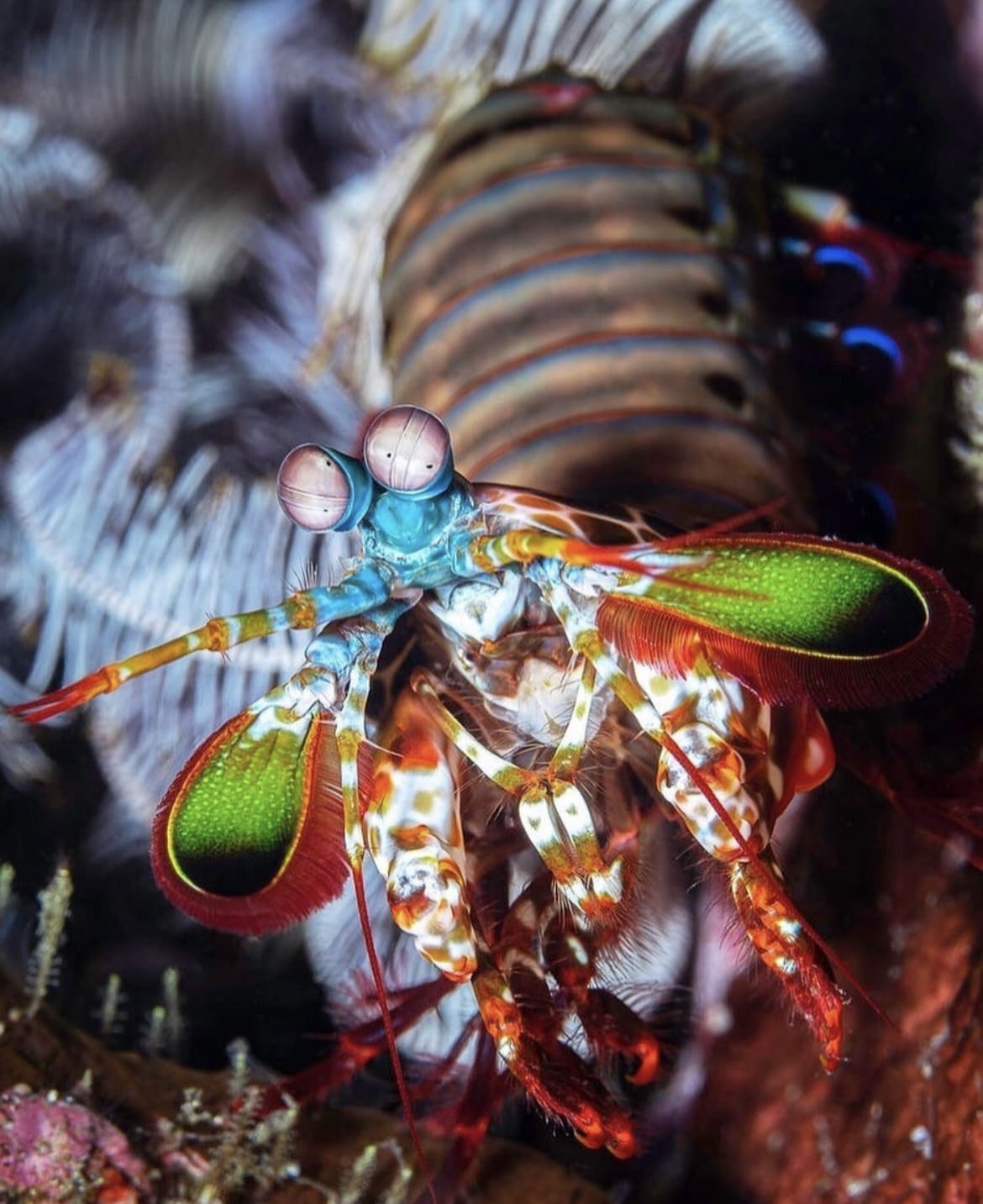
6. Axolotl
Venture into the freshwater caves of Mexico, and you might encounter the axolotl, a salamander that refuses to grow up. Known for its perpetual larval stage, the axolotl can regenerate almost any part of its body, making it a subject of extensive scientific research.
With a smile that’s equal parts endearing and eerie, this “Mexican walking fish” (though not a fish) is a favorite among exotic pet enthusiasts and biologists alike. The axolotl is a shining example of the strange animals of the deep, or in this case, the depths of freshwater caves.
Its ability to regenerate is not just a biological marvel; it’s a symbol of resilience and adaptability, qualities that define the myriad forms of life sharing our planet.

7. Dumbo Octopus
Diving further into the realm of the weirdest underwater animals, we encounter the Dumbo octopus, named affectionately after the iconic Disney character due to its ear-like fins.
This deep-sea dweller flutters through the darkness of the ocean’s abyss, where light is a scarce commodity, using its unique appendages to propel itself in a way that’s as close to flying as it gets underwater. The Dumbo octopus’s habitat, ranging from the shallows to the extreme depths of up to 7,000 meters, makes it one of the most adaptable cephalopods.
Its ability to thrive in such extreme conditions and its unconventional appearance earn it a spot among the ocean’s most fascinating and unusual creatures. With a face that could melt the coldest hearts, the Dumbo octopus adds a touch of whimsy to the diverse cast of the ocean’s weirdest underwater animals.

@schmidtocean
8. Barreleye Fish
Within the vast expanse of the sea, the barreleye fish stands out for its extraordinary head, which is completely transparent.
This peculiar adaptation allows it to collect more light in the dark depths it calls home, providing a literal window into the workings of its unique visual system. The eyes of the barreleye, encased in its clear dome, can rotate to scout for prey overhead, making it a formidable predator despite its fragile appearance.
Living in the twilight zone of the ocean, this fish’s unusual features exemplify the incredible adaptations required to survive in one of the planet’s most extreme environments.
The barreleye fish is a testament to the oddities that evolution can produce, making it a noteworthy member of the collection of the weirdest underwater animals.
@mbari_news
9. Narwhal
The narwhal, with its singular, spiraling tusk, ventures into the icy waters of the Arctic, joining the ranks of the weirdest underwater animals. This “unicorn of the sea” has fascinated humans for centuries, inspiring legends and tales with its otherworldly appearance.
The tusk, an elongated tooth, can grow up to 10 feet long in males and serves various roles, from sensory organ to a tool in social interactions. Narwhals are a marvel of the marine world, embodying the mystery and majesty of the ocean’s depths.
Their presence in the frigid waters of the Arctic is a reminder of the adaptability and diversity of life, even in the most inhospitable corners of the planet.

10. Psychedelic Frogfish
Among the pantheon of the weirdest underwater animals, the psychedelic frogfish occupies a special place with its outlandish appearance and striking colors.
Discovered off the coast of Indonesia, this rare fish boasts a vibrant pattern that rivals the most vivid psychedelic art, blending seamlessly with coral reefs to ambush unsuspecting prey. Its ability to “walk” along the ocean floor using its pectoral fins adds to its quirky charm, making it a fascinating subject of study for marine biologists and a captivating sight for underwater explorers.
The psychedelic frogfish embodies the essence of the ocean’s ability to surprise and mesmerize, further enriching the tapestry of life beneath the waves with its unique blend of beauty and oddity.
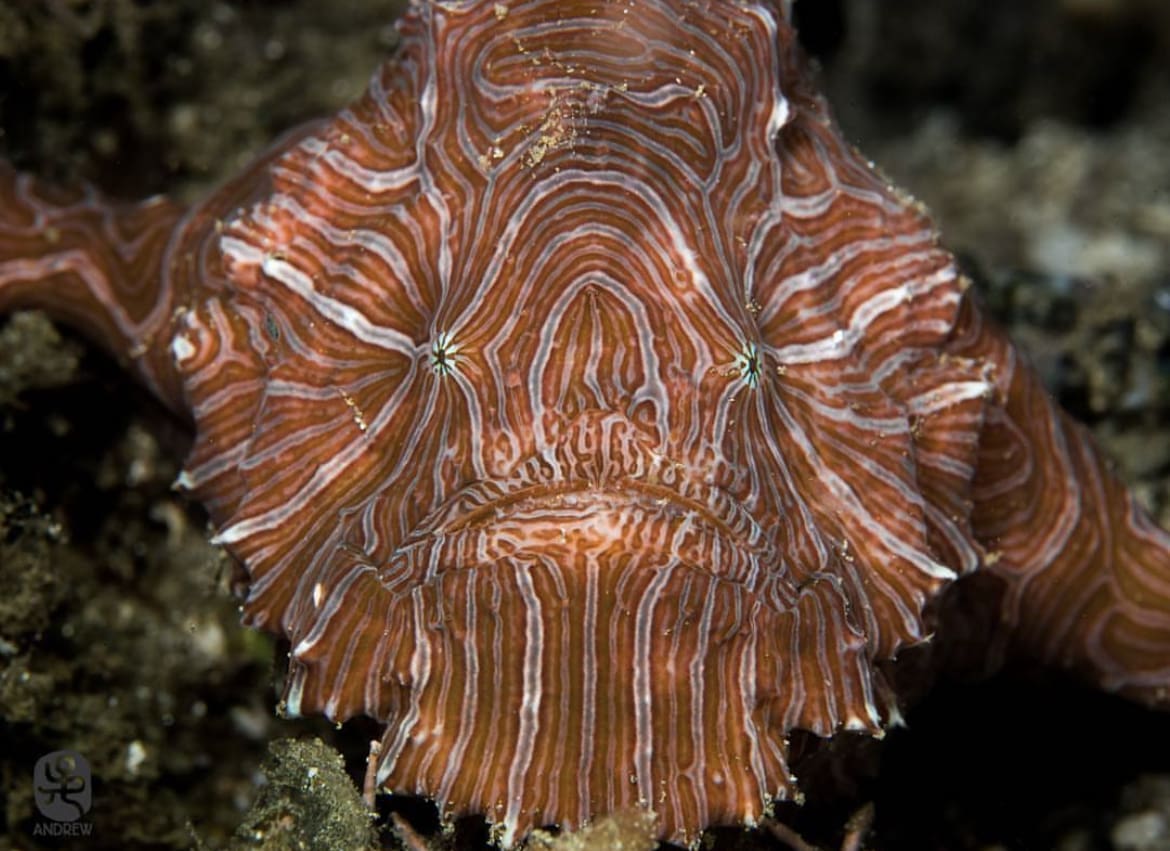
11. Giant Isopod
The giant isopod is a creature that looks like it crawled out of a science fiction novel. These oversized relatives of the common woodlouse can grow up to 2.5 feet in length, roaming the ocean floor in search of food.
With their hard, segmented exoskeletons and deep-sea dwelling habits, giant isopods are the epitome of survival in the ocean’s abyssal plains. Often considered the scavengers of the deep, they play a crucial role in the marine ecosystem, recycling dead and decaying matter.
Their alien-like appearance and fascinating behavioral traits make giant isopods a standout example of the incredible diversity and adaptability of marine life, securing their spot among the ocean’s most unusual and intriguing inhabitants.

12. Lancetfish
Completing our journey through the gallery of the weirdest underwater animals, the lancetfish demands attention with its prehistoric appearance and ghostly silhouette.
With large, fang-like teeth and a dorsal fin that runs the length of its body, lancetfish look like something straight out of the Mesozoic era. These deep-sea predators are capable of making significant vertical migrations, coming closer to the surface at night to feed.
Their gelatinous flesh and peculiar, elongated bodies make them an odd sight by any standard, contributing to the endless fascination with the deep sea’s mysterious inhabitants.
The lancetfish, with its ancient lineage and elusive nature, encapsulates the enduring allure and mystery of the ocean’s depths, reminding us of how much remains to be discovered in the vast blue frontier.
The ocean is a vast, unexplored space, brimming with life forms that defy our expectations and challenge our understanding of biology. From the adorable Dumbo octopus to the peculiar barreleye fish, the mythical narwhal, and the vibrant psychedelic frogfish, the marine world is a testament to the creativity of evolution.
The giant isopod and lancetfish round out our exploration of the weirdest underwater animals, each contributing to the rich mosaic of life that thrives in the planet’s most remote and inhospitable environments. These creatures not only fascinate and inspire but also highlight the importance of preserving our oceans.
As we delve deeper, let us remember the responsibility we share to protect these remarkable beings and their habitats, ensuring that the ocean’s mysteries continue to unfold for generations to come.
